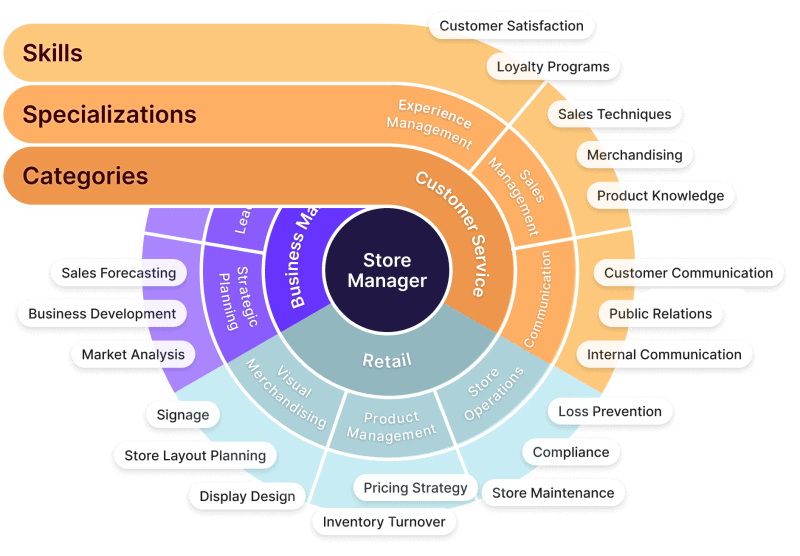Most people want to do great. Even the ones that show little passion for what they are doing, they probably want to do well and be inspired by what they working on. You as a leader can inspire them to get there or let mediocrity grow into your culture. Communication makes all the difference. It took me a while to grasp this: I’ve observed the same people led by great leaders and mediocre ones, and I understood that the difference in their performance originated there.
This is something I am deeply passionate about because I’ve seen what great communication and clarity can do to companies and how the opposite creates toxic environments. We could talk for hours about what “communication” means, but overall I refer to the way leaders approach their teams, talk to them and engage with them. In good and bad times, because being a leader in bad times is what makes the difference for people.
In this article I want to teach you a few things I’ve personally experienced:
- How to communicate effectively with a team of people
- Inspiring people as a leader
- How to be clear on what you expect and why it matters
Some of these topics are usually treated as high-level concepts that managers and executives should keep in mind but not really master. The reason why I am writing this is because over the last 10+ years every executive I’ve interviewed told me she deeply valued communication with her team. And still, only 5% of the executives I’ve met really knew how to communicate and be effective with it.
Before we start, let me clarify what I mean with communication. I can tell you what to do and what we need to achieve as a team, or I can show you how big and inspiring is what we are building and I can try to answer all the potential doubts you have in your mind, telling you what we know and what we will discover together. The second approach is what I mean because is the only one that truly makes team thrive and do 10x better than any other group of people.
How to communicate effectively with your team
Over the years I fell in love with the idea of writing letters to my team.
As CEO I was expected to set the vision for our company and to answer questions that my executives were thinking of without openly telling me. I had a team of executives distributed among the US, Italy, Switzerland and New Zealand and I had to find a way that would have worked for everyone and would give each of them time to read and digest what I had to say.
I started writing long-form documents where I was detailing my vision for our company and I was diving deep in some of the most important questions we had to answer. At some point we decided to shift to the idea of building a Skills Intelligence Platform, a new software category that we felt we could uniquely build with a combination of software and content.
In that case, as a team, we spent several meetings to brainstorm and describe what this new software category needed to be and how we could create one. But then the idea needed to stay with our people and so I started writing several documents trying to go into details on what we needed to achieve as executive team and what were the next steps for it – a lot of this was a repetition of our meeting, sometimes adding answers to potential questions we did not have time to discuss and clarify. I had to share what I felt was clear in my mind and not still 100% visible for my team. They had to understand that some part of the vision was absolutely clear and that some things were still up in the air, and it was ok, they were unclear for all of us.
Writing letters to my team helped me define some parts of my vision in a detailed way and, while writing, I was forced to be specific about what and why. As I was writing them I was asking myself a simple question “What Executive X would think of something like this? What kind of questions is he asking himself right now?” – For instance, my SVP Sales was probably wondering what was the main persona and use case we were targeting and what kind of companies would have used this new solution.
You need to find your style as you communicate to your team. In this case I wanted to be as open as possible because our success was dependent on my ability to clarify what we needed to achieve. A lot of CEOs struggle to clarify their vision to the team: it’s clear in their mind but not for their teams and not many will go to the CEO and say “Your vision is not clear”.
If you write a letter to your team, you should make that as personable as possible: some people will get to know you in a way that is not visible for them otherwise (maybe you work in different locations and virtual meetings are not helpful) and that will create a level of trust and intimacy that is incredibly valuable.
As you start writing a letter, make sure you have clear in mind what’s the focus of that and what you want to communicate. Send the first one and ask for feedback, then keep doing it. Weekly is great, monthly is enough to make sure your team gets to know you and your vision. Over a few months you will see how everyone starts understanding your vision and questions transform themselves in proposals and ideas coming from the team.
Inspiring people as a leader
A great advantage for founders is their ability to lead with vision and inspire their teams. While there are ton of amazing professional CEOs, founders are usually the only ones able to truly be visionaries. The best founders see the future and can tell you how it looks like.
As a leader, you should focus on making sure everyone has a very clear understanding of what the company is trying to achieve: not just the overall vision, which is the starting point, but also the steps to get there and how every single project it’s running contributes to that. A lot of leaders don’t understand how valuable this is and how easy it is to take care of it: get your team together and talk to them about all of that. As I said, it can be in written form or it can be in several meetings where you clarify your vision and open up to questions.
This step is fundamental to lead and inspire your team: people want to work for leaders that have a clear vision of where they need to go and that are clearly thinking about “what’s next if we achieve this step”. The reason why this is inspirational is because it creates a sense of purpose and challenge within the team that helps people value their efforts and understand why they are needed.
This become 2x more difficult when your team gets bigger (10+ people) and that’s why you should be even more disciplined in communicating to your team.
As you start aligning people on goals, vision and clear understanding of what’s next there will be a simple consequence in the team: people will be more positive and more proactive. They now “own” the vision of what they are doing, and they can use their skills to march in that direction. Your best people will love that enough to start spreading that vision and make it clear for new people that are joining the team.
How to be clear on what you expect and why it matters
When I started managing people I did not immediately realise something pretty easy: people need simple examples to understand your vision and mission. In the early days I was talking a lot about our vision with complex terms and with a set of words that did not really translate into clear examples and benefits for our people.
The world is full of CEOs and managers that are using complex words to say little. People know that and they immediately switch off their brain when that happens.
People expect you, as a leader, to be the most competent person in your space and to be a quasi expert of what you are talking about: that’s why you should really lead with clear examples of what your vision will enable.
Start with customers. This is something that helps a lot: make a set of clear examples of why and how customers will use your product / will buy into that vision. What problem does it solve for them? Did you see that in the market? If yes, talk to them about it. All these examples need to be real and ideally you really have spent time thinking about them.
Last but not least: not everyone will buy into your vision. It’s ok and the people that are skeptical are actually the most important ones. Invite them to ask questions and – if needed – tell them why you might understand where they come from (e.g. They don’t think customers will buy that specific feature) but that you believe there is a chance and you are happy to try and see how it goes.
Your role, as leader, is to take risks. The team can absolutely understand that, but wants to hear it from you and wants to see how you
December 2, 2022


